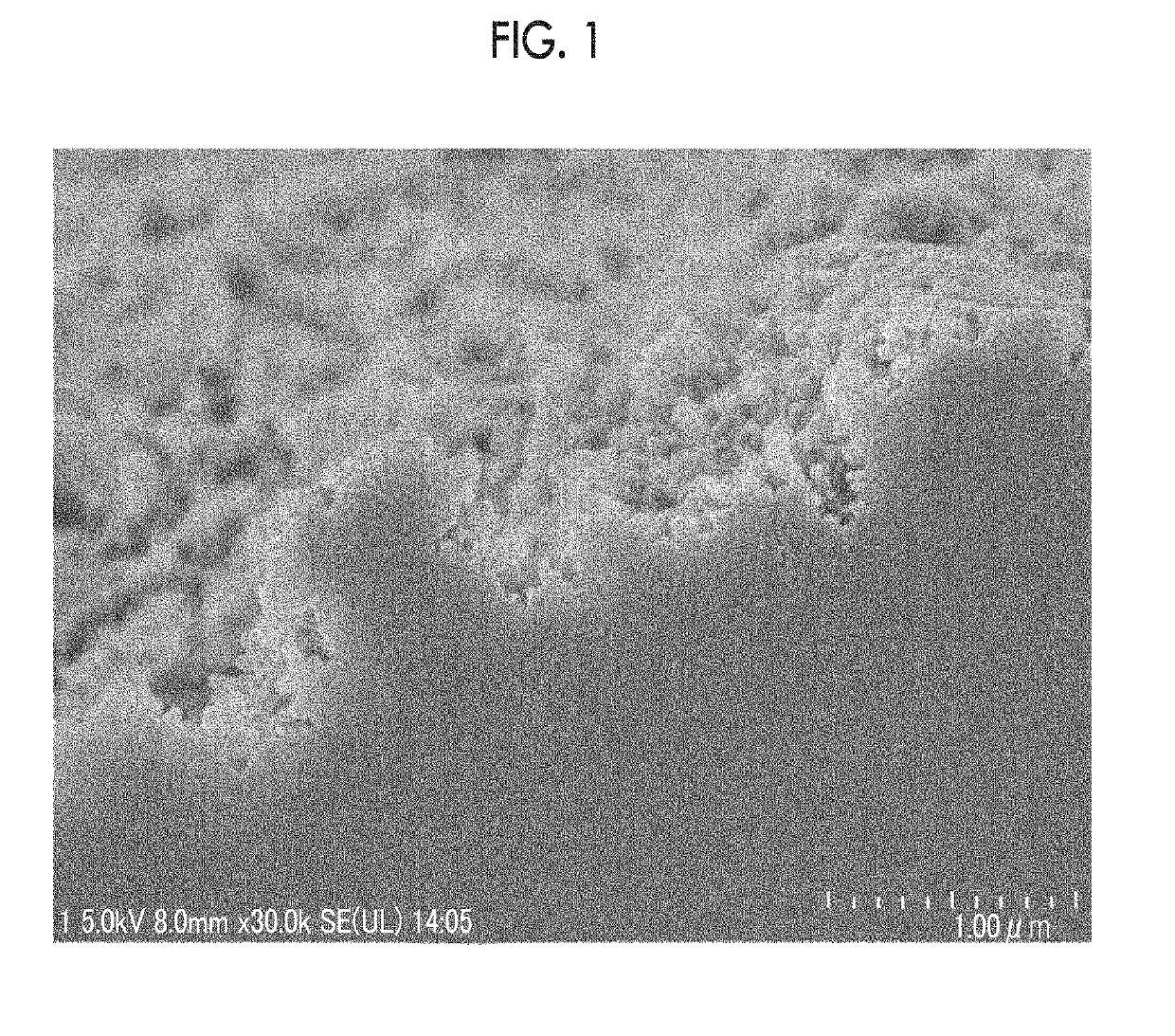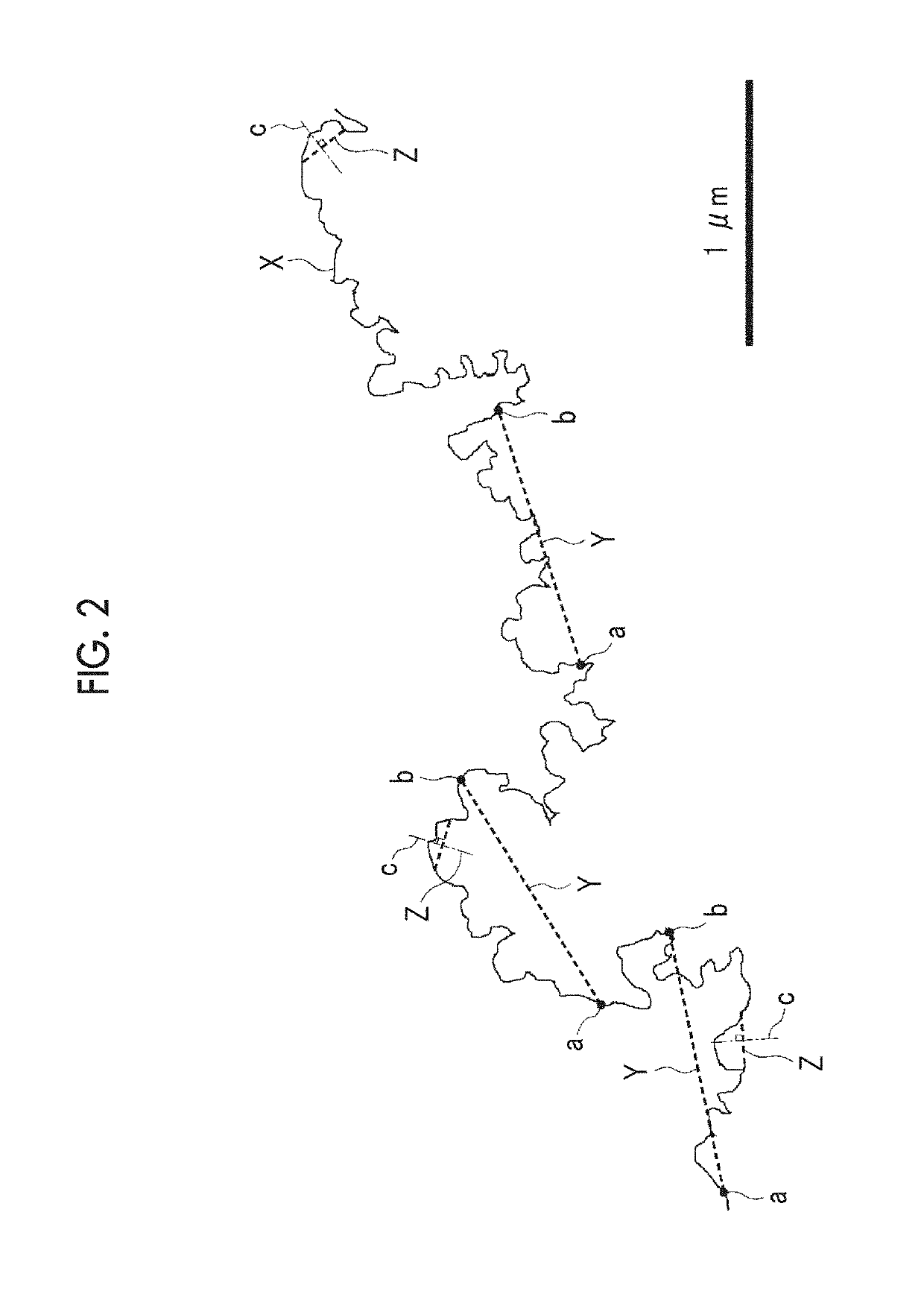Aluminum support for planographic printing plate and planographic printing plate precursor
- Summary
- Abstract
- Description
- Claims
- Application Information
AI Technical Summary
Benefits of technology
Problems solved by technology
Method used
Image
Examples
example 1
[0271][Production of Aluminum Support for Planographic Printing Plate]
[0272]In order to remove a rolling oil on the surface of a 0.3 mm-thick aluminum plate (material: JIS A 1050), a defatting treatment was carried out at 50° C. for 30 seconds using an aqueous solution of 10% by mass of sodium aluminate.
[0273]After that, the surface of the aluminum plate was grained using three nylon braided brushes having a hair diameter of 0.3 mm and a water suspension of pumice having a median diameter of 25 μm (specific weight: 1.1 g / cm3) and well washed with water.
[0274]Next, the aluminum plate was immersed in an aqueous solution of 25% by mass of sodium hydroxide (45° C.) for nine seconds to carry out etching, washed with water, then, further immersed in an aqueous solution of 20% by mass of nitric acid at 60° C. for 10 seconds, and washed with water. The amount of the grained surface etched was approximately 3 g / m2.
[0275]
[0276]Next, an electrochemical roughening treatment was continuously car...
examples 13 to 19
[0298]Aluminum supports for a planographic printing plate and planographic printing plate precursors were produced using the same method as in Example 1 except for the presence or absence of the undercoat layer and the use of a compound not having a repeating unit having a phosphoric acid group in the structure of the compound for an undercoat layer (1) instead of the compound for an undercoat layer (1) as shown in Table 1.
[0299]For the aluminum supports for a planographic printing plate produced in Examples 1 to 19 and Comparative Examples 1 to 4, the average value of the surface area-increase rates ΔSSEM (%), the average value of the pit depths ΔhSEM (nm), and the respective values of L*, a*, and b* in the L*a*b* color space were measured using the above-described method. The results are shown in Table 1.
[0300][Evaluation]
[0301]
[0302]The obtained planographic printing plate precursor was exposed using Fujifilm's Luxel PLATESETTER T-6000III equipped with an infrared semiconductor l...
PUM
 Login to View More
Login to View More Abstract
Description
Claims
Application Information
 Login to View More
Login to View More - R&D
- Intellectual Property
- Life Sciences
- Materials
- Tech Scout
- Unparalleled Data Quality
- Higher Quality Content
- 60% Fewer Hallucinations
Browse by: Latest US Patents, China's latest patents, Technical Efficacy Thesaurus, Application Domain, Technology Topic, Popular Technical Reports.
© 2025 PatSnap. All rights reserved.Legal|Privacy policy|Modern Slavery Act Transparency Statement|Sitemap|About US| Contact US: help@patsnap.com



